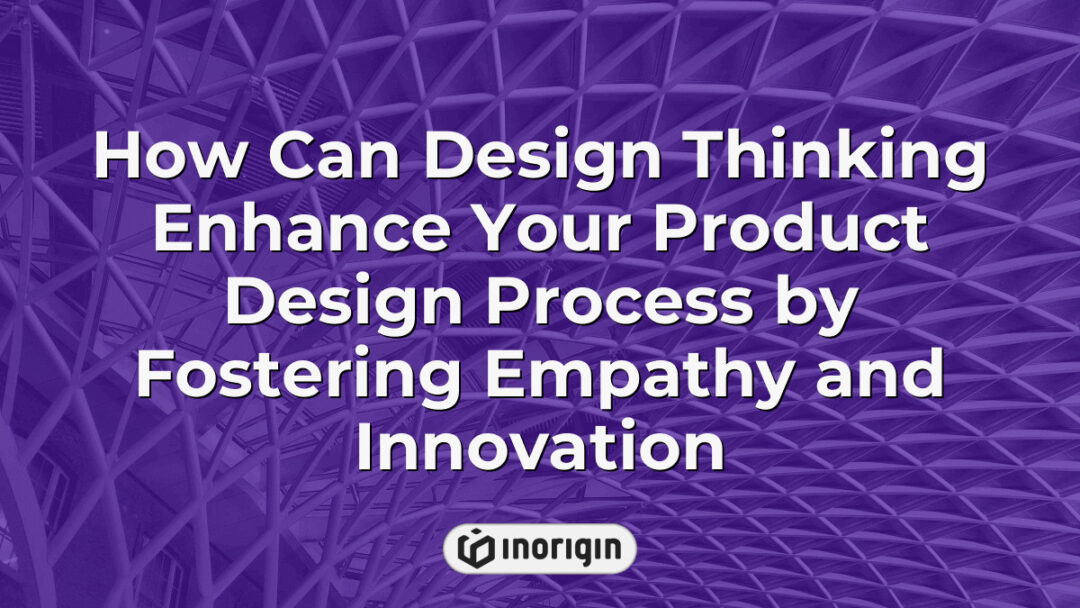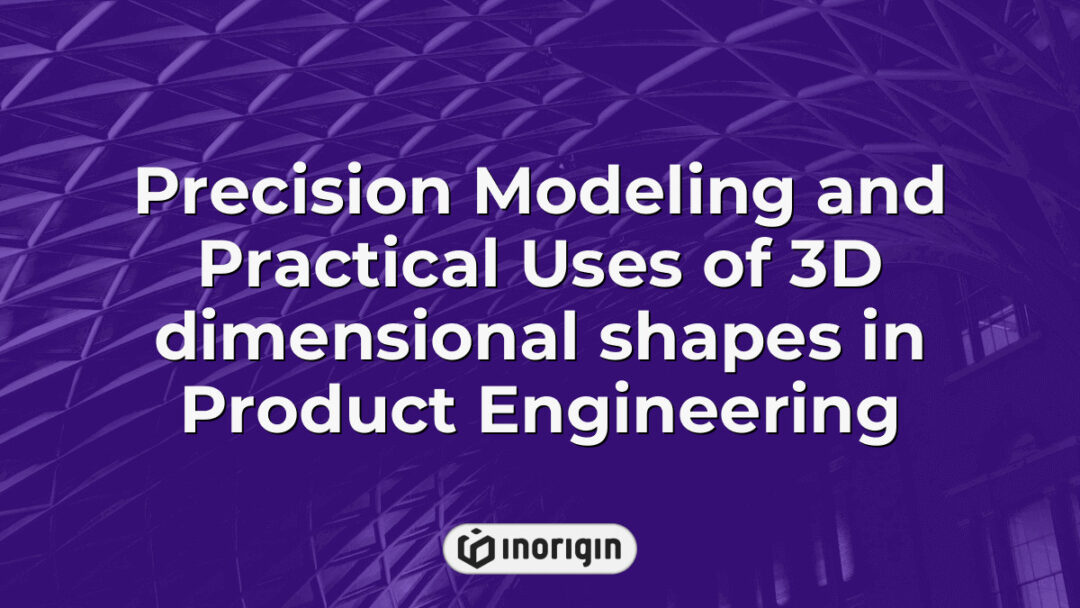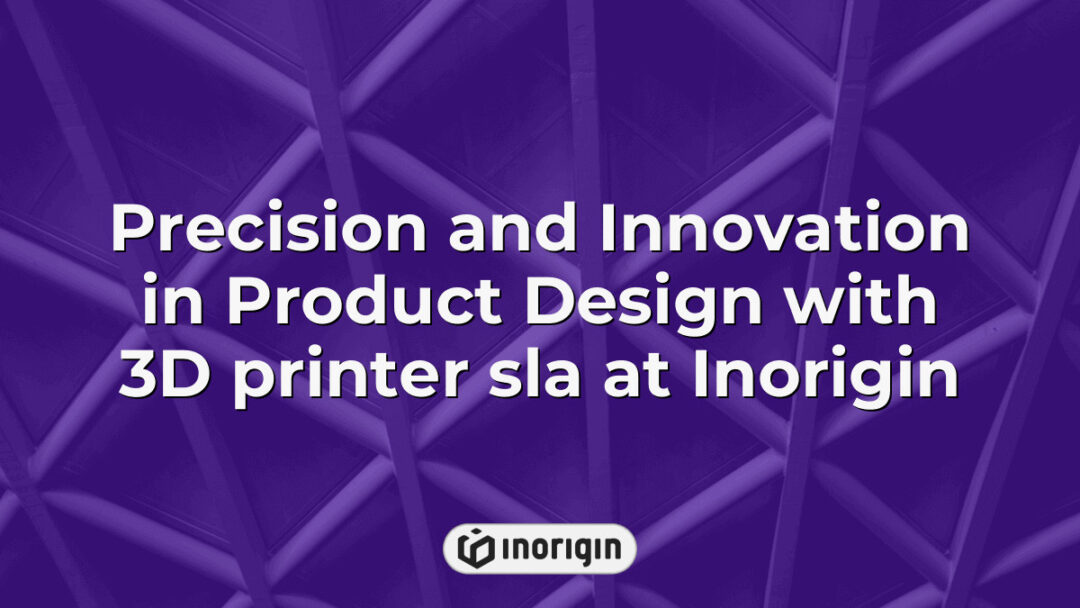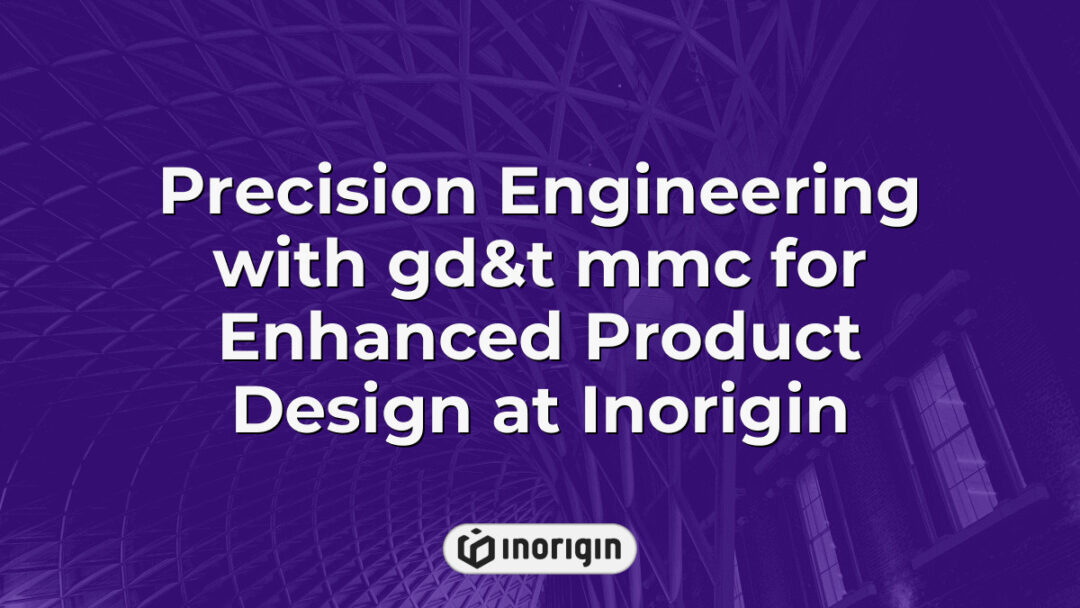Have you ever wondered how some products seem to just "click" with users, while others fall flat? The secret may lie in the process of design thinking. By incorporating this innovative approach into your product design process, you can unlock a whole new level of creativity and empathy that will enable you to truly connect with your target audience on a deeper level. So, how exactly can design thinking enhance your product design process? Let’s dive in and explore the transformative power of this methodology.
| Aspect | Key Takeaway |
|---|---|
| Role of Design Thinking | How Can Design Thinking Enhance Your Product Design Process? By embedding user empathy and iterative collaboration, this approach leads to truly innovative and user-centered product solutions. |
| Empathy in Design | Incorporating empathy allows you to deeply understand user needs and pain points, creating products that foster stronger customer connections and enhance satisfaction. |
| Problem Statement Refinement | Effectively defining and redefining the problem ensures solutions address core user challenges and opens the door to innovative design opportunities. |
| Ideation and Collaboration | Collaborative ideation sessions bring diverse perspectives together, encouraging creative brainstorming that fuels breakthrough product concepts. |
| Prototyping and User Testing | Rapid prototyping followed by user testing gathers actionable feedback, enabling continuous refinement that enhances usability and product-market fit. |
| Cross-functional Team Involvement | Engaging cross-functional experts from design, engineering, and marketing ensures well-rounded solutions that balance feasibility and market appeal. |
| Measuring Success Through User Feedback | Tracking user satisfaction and engagement provides data-driven insights to guide iterative improvements, boosting long-term product success. |
Understanding The Principles Of Design Thinking
Imagine design thinking as a compass guiding you through the wilderness of product development, helping you navigate towards innovative solutions and user-centered designs. By understanding the principles of design thinking, you can unlock the potential to revolutionize your product design process. Design thinking encourages empathy, collaboration, iteration, and experimentation – essential elements that drive creativity and innovation in product design. It challenges traditional problem-solving methods by prioritizing human needs and experiences at every stage of the process. In essence, design thinking is not just a methodology; it’s a mindset that fosters a deep connection between designers and users, resulting in products that truly resonate with their intended audience.
As we delve deeper into incorporating empathy into your product design process…
Incorporating Empathy Into Your Product Design Process
One of the key ways to enhance your product design process is by incorporating empathy into it. By putting yourself in the shoes of your users and truly understanding their needs, desires, and pain points, you can create products that resonate with them on a deeper level. Empathy allows you to design solutions that address real problems and improve the overall user experience. When you prioritize empathy in your design process, you are more likely to create products that are not only functional but also meaningful to your target audience.
Furthermore, incorporating empathy into your product design process helps you build stronger connections with your customers. By showing that you understand and care about their experiences, you can foster loyalty and trust among your user base. This emotional connection can lead to increased customer satisfaction, brand advocacy, and ultimately, business growth. In today’s competitive market landscape, empathetic design has become a powerful tool for companies looking to differentiate themselves from the competition.
As we delve further into defining and redefining the problem statement…
Defining And Redefining The Problem Statement
When it comes to product design, defining and redefining the problem statement is a crucial step in the design thinking process. By clearly identifying the core issue that needs to be addressed, designers can ensure that their solutions are truly impactful and meet users’ needs effectively. This stage involves not only understanding the initial problem but also continuously revisiting and refining it as more insights are gathered throughout the design process. Through this iterative approach, designers can uncover hidden challenges, explore alternative perspectives, and ultimately arrive at innovative solutions that resonate with their target audience.
Transitioning from defining and redefining the problem statement leads us seamlessly into generating innovative ideas through ideation sessions.
Generating Innovative Ideas Through Ideation Sessions
Have you ever heard the theory that great ideas are born out of collaboration and brainstorming? Well, in the product design process, this theory holds true when it comes to generating innovative ideas through ideation sessions. These sessions bring together diverse perspectives and creative minds to explore different possibilities and solutions for a given problem statement. By fostering an environment where all ideas are welcomed and encouraged, teams can uncover unique insights and approaches that may have otherwise been overlooked.
During ideation sessions, participants engage in activities such as brainstorming, mind mapping, and rapid prototyping to quickly generate a wide range of ideas. The goal is not just to come up with one perfect solution but to explore multiple options that can be refined and combined into something truly innovative. This iterative process allows teams to push beyond their initial assumptions and constraints, leading to breakthrough ideas that have the potential to transform the final product.
As teams move from defining the problem statement to generating innovative ideas through ideation sessions, they set themselves up for success in the next phase of the product design process: prototyping and testing. This hands-on approach involves creating tangible representations of concepts and gathering feedback from users to inform further iterations. By incorporating user input early on, teams can ensure that their designs meet real-world needs and expectations.
Prototyping And Testing To Gather Feedback From Users
When it comes to enhancing your product design process, prototyping and testing play a crucial role in gathering valuable feedback from users. By creating prototypes of the product and allowing real users to interact with them, designers can gain insights into what works well and what needs improvement. This iterative approach helps refine the product design based on actual user experiences, leading to a more user-centered and successful final product.
To effectively gather feedback from users through prototyping and testing, consider the following:
- Conduct usability tests with target users to observe how they interact with the prototype.
- Implement changes based on user feedback to improve the overall user experience.
- Iterate on designs by continuously testing and refining until you reach an optimal solution for your product.
By incorporating prototyping and testing into your design process, you can ensure that your product meets the needs and expectations of your target audience while also fostering innovation within your team. Next, let’s delve deeper into iterating on designs based on user feedback for further refinement.
Iterating On Designs Based On User Feedback
When it comes to product development, iterating on designs based on user feedback is crucial for creating successful and impactful products. By continuously refining and improving designs through feedback from users, designers can ensure that the final product meets the needs and preferences of their target audience. This iterative process allows for adjustments to be made in real-time, leading to a more user-centric approach to design. Additionally, by incorporating user feedback into each iteration, designers can address any pain points or areas of improvement early on in the product development cycle.
This focus on iterating based on user feedback not only enhances the overall design process but also results in a final product that resonates with its intended users. By actively listening to and implementing feedback from users, designers can create products that are tailored to meet specific needs and preferences. This iterative approach ensures that the end result is not only aesthetically pleasing but also functional and practical for the end-user. In order to fully leverage this approach, collaborating with cross-functional teams for diverse perspectives becomes essential in gaining valuable insights and ensuring a well-rounded design solution.
Collaborating With Cross-functional Teams For Diverse Perspectives
Collaborating with cross-functional teams for diverse perspectives is a crucial component of the design thinking process. For example, when designing a new app interface, involving not only designers but also engineers, marketers, and customer support representatives can provide valuable insights on functionality, usability, and marketability. By working together, these different team members can bring their unique expertise to the table and contribute to creating a more well-rounded product that meets the needs of various stakeholders.
Furthermore, by incorporating diverse perspectives from cross-functional teams, designers can ensure that they are considering all aspects of the product design process. Engineers may highlight technical limitations or feasibility issues that could impact the final design, while marketers may offer insights into how certain features will resonate with target audiences. By collaborating closely throughout the design process, teams can identify potential challenges early on and work together to find innovative solutions that address them effectively.
Transitioning into embracing a human-centered approach to product design involves valuing collaboration and input from individuals across different functions within an organization. This inclusive approach not only enriches the overall design process but also ensures that products are truly user-centric and tailored to meet the needs and expectations of consumers.
Embracing A Human-centered Approach To Product Design
Did you know that 85% of successful product designers use a human-centered approach in their design process? Embracing a human-centered approach to product design involves understanding the needs, desires, and behaviors of your target audience. By putting people at the center of your design process, you can create products that truly resonate with users. This approach allows you to empathize with your customers, gain valuable insights into their experiences, and ultimately deliver solutions that address their specific pain points.
Furthermore, when you embrace a human-centered approach to product design, you are more likely to create products that not only meet but exceed user expectations. By focusing on the end-users throughout the entire design process, from ideation to prototyping to testing, you can ensure that every decision is made with the user in mind. This customer-centric mindset leads to higher satisfaction rates, increased loyalty, and ultimately greater success for your product.
By utilizing design thinking tools and techniques for problem-solving, you can take your product design process to the next level. Through iterative brainstorming sessions, rapid prototyping, and user testing, you can continuously refine your designs based on real feedback and data. With a strong foundation in human-centered design principles, you can confidently navigate the complexities of product development and innovation.
Utilizing Design Thinking Tools And Techniques For Problem-solving
Design thinking tools and techniques are like a Swiss army knife for product designers, offering a versatile approach to problem-solving that puts the user at the center of the design process. By utilizing methods such as empathy mapping, ideation sessions, and prototyping, designers can gain valuable insights into users’ needs and preferences while generating innovative solutions to address them. This human-centered approach not only fosters creativity but also ensures that the final product meets the demands of its intended audience.
As you navigate through the design thinking process, it becomes clear how these tools and techniques enhance your ability to create products that truly resonate with users. From uncovering hidden pain points to iterating on designs based on feedback, each step in the process is informed by a deep understanding of user needs and behaviors. This iterative nature allows designers to refine their ideas continuously, leading to more meaningful and impactful products.
Measuring the success of your product design through user satisfaction and engagement is crucial for ensuring that your efforts have paid off in creating a product that resonates with its target audience. By incorporating feedback loops and analytics into your design process, you can gather valuable data on how users interact with your product and make informed decisions about future iterations. Ultimately, this focus on user satisfaction drives continuous improvement and innovation in your product design journey.
Measuring The Success Of Your Product Design Through User Satisfaction And Engagement.
By measuring the success of your product design through user satisfaction and engagement, you can gain valuable insights that drive continuous improvement. Understanding how users interact with your product allows you to identify areas for enhancement and innovation. By focusing on user satisfaction, you can ensure that your design meets their needs and expectations, leading to a more successful product in the market. Additionally, tracking user engagement provides real-time feedback on the effectiveness of your design decisions, allowing for quick adjustments as needed.
Incorporating design thinking into your product design process not only improves the quality of your final product but also increases overall customer satisfaction. Through a user-centered approach, you can create products that resonate with consumers on a deeper level. This focus on user satisfaction and engagement ultimately sets the foundation for long-term success in the competitive marketplace.
Frequently Asked Questions
How Can Design Thinking Principles Be Applied To Industries Outside Of Traditional Product Design?
Design thinking principles can be applied to industries outside of traditional product design with great success. By focusing on empathy, ideation, prototyping, and testing, any industry can benefit from a human-centered approach to problem-solving. For example, in the healthcare industry, applying design thinking can lead to improved patient experiences and more efficient processes. Similarly, in education, using design thinking can help educators create engaging learning environments tailored to students’ needs and preferences.
In the field of marketing, design thinking principles can revolutionize how companies connect with their target audience by understanding their customers’ motivations and desires. By incorporating elements of design thinking into their strategies, businesses can develop innovative solutions that resonate with consumers on a deeper level. Furthermore, in the realm of urban planning and architecture, utilizing design thinking can result in more sustainable and community-centric spaces that enhance quality of life for residents.
TIP: When applying design thinking principles to industries beyond traditional product design, remember to prioritize collaboration and iteration throughout the process. This will ensure that all stakeholders are involved in creating meaningful solutions that address real-world challenges effectively.
What Are Some Common Challenges Faced When Incorporating Empathy Into The Product Design Process?
When incorporating empathy into the product design process, designers often encounter common challenges that can hinder the overall success of their projects. One major challenge is overcoming biases and assumptions about end users, which can lead to products that do not truly meet their needs or preferences. Another hurdle is balancing empathetic insights with business goals and constraints, as sometimes these two aspects may seem at odds with each other. Additionally, ensuring that all team members are on board with incorporating empathy throughout the design process can be a struggle, especially if there is resistance or lack of understanding about its importance.
Addressing these challenges requires a concerted effort from designers and stakeholders alike to prioritize empathy in every stage of the product design process. By actively listening to user feedback, conducting thorough research, and consistently seeking out diverse perspectives, designers can overcome biases and create products that truly resonate with their target audience. Moreover, fostering a culture of empathy within the design team can help align everyone towards a common goal of creating meaningful solutions for users. It is important to continuously reflect on how empathy is being integrated into the design process and make adjustments as needed to ensure that user needs remain at the forefront.
By acknowledging and addressing these common challenges faced when incorporating empathy into the product design process, designers can ultimately create more impactful and successful products that resonate with users on a deeper level. Embracing empathy as a core principle in design thinking not only enhances the quality of products but also fosters stronger connections between brands and consumers.
How Can A Problem Statement Be Effectively Redefined During The Design Thinking Process?
During the design thinking process, a crucial step is effectively redefining the problem statement to ensure that the focus remains on addressing the root cause of the issue. Imagine you are trying to build a bridge across a river, but instead of focusing solely on constructing the bridge, you realize that people actually need a way to cross safely and efficiently. This shift in perspective allows for more innovative solutions that truly meet the needs of users.
By reframing the problem statement in this manner, designers can uncover hidden insights and opportunities that may have been overlooked initially. For example, by asking "How might we make crossing the river easier?" instead of "How can we build a bridge?", designers may consider alternative solutions such as ferry services or zip lines that could provide better outcomes for users. This flexibility and open-mindedness during problem definition are key aspects of design thinking that lead to more impactful and user-centric designs.
In essence, effective problem statement redefinition during the design thinking process enables designers to think beyond surface-level solutions and delve deeper into understanding user needs and desires. By challenging assumptions and exploring different perspectives, teams can unlock creativity and innovation that ultimately result in products with greater value and impact.
Conclusion
Design thinking is like the secret sauce that can take your product design process from bland to grand. By challenging assumptions and putting users at the center of everything, you’ll be able to cook up some truly innovative and user-friendly designs. So go ahead, sprinkle some design thinking magic on your next project and watch it sizzle with success!
Related posts:
- How Can Design Thinking Influence User-Centered Design to Create Empathy-Driven Innovations
- Why Is Human-Centered Design Essential in Product Engineering for Driving User Satisfaction and Market Success
- How Can Design Thinking Impact Your Product Development Process by Enhancing Innovation and User-Centered Solutions at Inorigin
- Why Is Design Thinking Essential in Product Development for Creating User-Centered Innovations at Inorigin
- How Can Design Thinking Improve Product Development Processes to Drive Innovation and User-Centered Success
- Design Thinking Impact Product Engineering Driving Innovation and Efficiency at Inorigin




